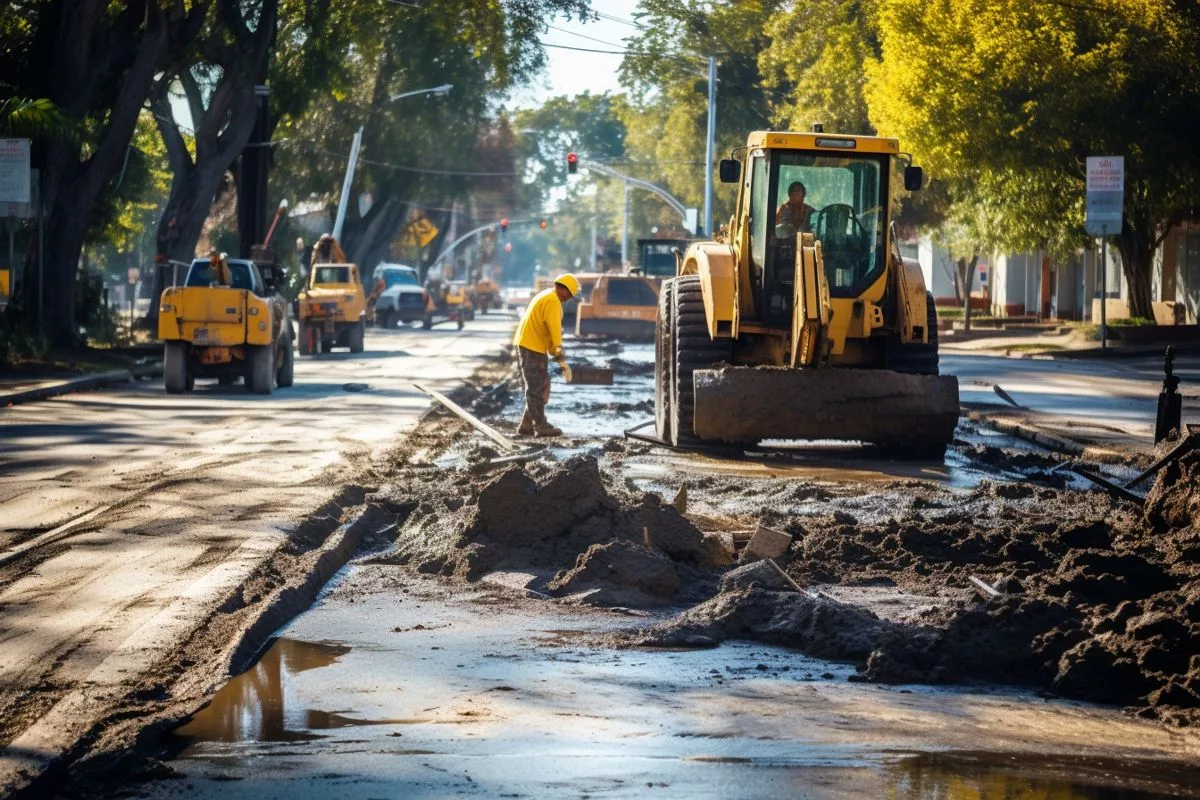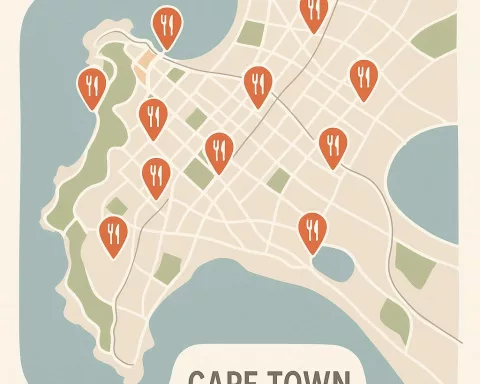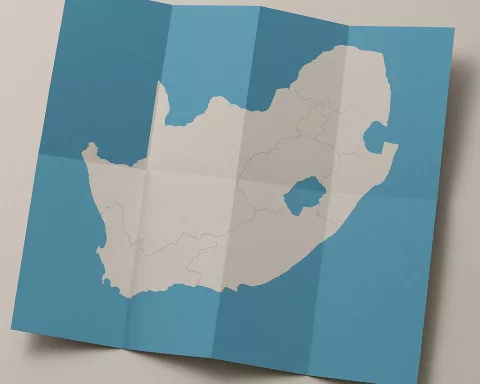The Western Cape Government has shown remarkable efforts in restoring infrastructure and roads damaged by devastating storms during Heritage weekend. The province collaborated with various departments and stakeholders to decrease the number of closed roads from 154 to 37, ensuring safety on the roads and restoring critical infrastructure. The province also provided disaster declarations and community support, highlighting the resilience and collaboration in the face of natural disasters.
How did Western Cape respond to the storm damage in Heritage weekend?
The Western Cape Government collaborated with various departments and stakeholders to address the widespread damage caused by storms during Heritage weekend. Despite 154 roads initially being closed, the Western Cape Department of Infrastructure decreased this number to 37. The province also ensured safety on the roads and restored access to vital infrastructure, with efforts ongoing regarding disaster declarations and community support.
Swift Response to Storm Damage
The Western Cape Government (WCG) has shown remarkable efforts in addressing the widespread damage to roads and infrastructure caused by the devastating storms during Heritage weekend. Premier Alan Winde, together with various Cabinet members, provided an update on the province’s progress in repairing and reopening roads and infrastructure.
The exceptional work of the WCG departments and stakeholders, especially in restoring access to the McGregor bridge, highlighted true collaboration and a shared sense of urgency. In just three weeks, the bridge was reopened, enabling the McGregor community to continue their economic activities.
The storms greatly affected roads and vital infrastructure, with 154 roads initially closed. This included essential sections of the N2 and N1 highways. Despite the challenges, the Western Cape Department of Infrastructure (DOI) decreased this number to 37. The WCG maintains reopening all affected roads as a top priority.
Restoring Access and Ensuring Safety
While some roads, such as Clarence Drive and Hemel-en-Aarde Road, remain closed, extensive work is in progress to restore access in these areas. Collaboration between different departments and stakeholders has been crucial in addressing the damage. Minister of Infrastructure, Tertuis Simmers, commended the Province’s efficiency in reconstructing and reopening the severely damaged roads in record time.
The Western Cape Mobility Department, led by Provincial Minister of Mobility Ricardo Mackenzie, has also displayed immense dedication to guaranteeing safety on the roads. Traffic officers have played a vital role in preventing potential accidents and loss of life by directing traffic away from damaged and flooded roads.
The storms left more than 82,000 people without electricity. Eskom’s technical teams worked around the clock and managed to reduce this number to 1,000 faults in less than a week after the flooding. The Overstrand Municipality experienced damages to major bulk water infrastructure, but the municipality succeeded in connecting water supplies in less than a week.
Disaster Declarations and Community Support
Efforts are ongoing regarding the disaster declarations following the severe weather in September and June. According to Anton Bredell, Western Cape Minister of Local Government, Environmental Affairs and Development Planning, the classification for a provincial state of disaster has been received, and the process of gazetting it is in progress.
The Department of Environmental Affairs and Development Planning has played a vital role in supporting landowners with emergency environmental approvals. Over 100 approvals were issued in less than two weeks, enabling people to resume business as quickly as possible.
The suffering experienced by communities has been a primary concern. The Western Cape Department of Social Development (DSD) has coordinated psycho-social services and facilitated access to humanitarian relief for the affected communities. In partnership with the Red Cross Society, the DSD helped collect and distribute donations. NGOs such as Gift of the Givers, South African Red Cross Society, Ashraful Aid International, Al-Imdaad Foundation, Heal Our Land, and the WeLoveU Foundation have all provided humanitarian aid to those in need.
The storms also significantly affected schools in the region. Heather van Ster, Chief Director: Districts at the Western Cape Department of Education, reported that all but one school were able to open after the school holidays. Sandhills NGK Primary School, which suffered severe damages, has made arrangements to accommodate learners and teachers at alternative sites while repairs are in progress.
Tourism, a crucial sector for the province, has also been negatively impacted by the severe weather, forcing businesses to close and resulting in millions of Rands in lost revenue and property damage. Mireille Wenger, provincial Minister of Finance and Economic Opportunities, acknowledged the resilience of this sector and confirmed that the Department of Economic Development and Tourism is exploring ways to provide support.
The story of resilience and collaboration in the face of natural disasters is a testament to the dedication, adaptability, and strength of the Western Cape communities. In the face of adversity, the province has proven its ability to unite and work towards a common objective: the restoration of infrastructure and the well-being of all its people.
1. What is the Western Cape Government’s response to the storm damage during Heritage weekend?
The Western Cape Government collaborated with various departments and stakeholders to decrease the number of closed roads from 154 to 37, ensuring safety on the roads and restoring critical infrastructure. They also provided disaster declarations and community support, highlighting the resilience and collaboration in the face of natural disasters.
2. What is the priority of the Western Cape Government regarding the affected roads?
Reopening all affected roads remains a top priority for the Western Cape Government.
3. What efforts are being made to restore access to areas with closed roads?
Extensive work is in progress to restore access in areas with closed roads, such as Clarence Drive and Hemel-en-Aarde Road. Collaboration between different departments and stakeholders has been crucial in addressing the damage.
4. How did the Western Cape Mobility Department ensure safety on the roads?
The Western Cape Mobility Department, led by Provincial Minister Ricardo Mackenzie, displayed immense dedication to guaranteeing safety on the roads. Traffic officers played a vital role in preventing potential accidents and loss of life by directing traffic away from damaged and flooded roads.
5. How did Eskom respond to the power outages caused by the storms?
Eskom’s technical teams worked around the clock and managed to reduce the number of people without electricity from more than 82,000 to 1,000 faults in less than a week after the flooding.
6. What is the status of disaster declarations following the severe weather in September and June?
According to Anton Bredell, Western Cape Minister of Local Government, Environmental Affairs and Development Planning, the classification for a provincial state of disaster has been received, and the process of gazetting it is in progress.
7. What support did the Western Cape Department of Social Development provide to affected communities?
The Western Cape Department of Social Development coordinated psycho-social services and facilitated access to humanitarian relief for the affected communities. They also helped collect and distribute donations in partnership with the Red Cross Society.
8. How did the severe weather impact the tourism sector in the Western Cape?
The severe weather negatively impacted the tourism sector, forcing businesses to close and resulting in millions of Rands in lost revenue and property damage. The Department of Economic Development and Tourism is exploring ways to provide support.








